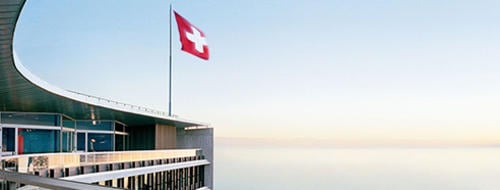Addressing Nestlé's corporate website carbon footprint
Climate change is one of society's greatest challenges. It is also one of the greatest risks to the future of our business and we are working towards net zero in our business and supply chains.
Why we care about improving the efficiency of Nestlé's digital ecosystem
To host our websites, Nestlé uses servers that consume energy to run and provide users with access to images, videos and text. Energy is also required to view and download content.
Using devices to access the internet is such a day-to-day activity, many of us don't think about the fact it generates greenhouse gas emissions. With over 70 corporate websites, changes we make to improve the energy efficiency of our digital assets can help reduce emissions.
What improvements are we making to our Nestlé corporate websites
Since 2021, we've worked to ensure any improvements to Nestlé's corporate websites use principles that take into account their footprint. This includes:
Improved performance
To enhance the performance of our websites, we are implementing effective caching strategies and improving page speed. This means reducing the size of our images and PDFs, therefore reducing page load time and the energy use required. At the same time, we must ensure any imagery and videos used on our sites resonate with the messaging on the page and serve a purpose. We want to provide users with a faster and more seamless browsing experience, optimizing energy use along the way.
Structure & user journey
We are regularly revamping the different sections of our Nestlé corporate websites to create a more intuitive and efficient user journey. We're simplifying the navigation, creating better cross-linking, improving our internal search functionality, and improving filters. All of these actions help our audiences to quickly find the information they are seeking, therefore reducing time spent on site, and ultimately, reducing energy usage.
Optimizing content
We regularly review our website data to identify further ways of improving our content. For example, by adding the relevant keywords that our users are searching for, content can be found more easily in a search engine. If our audiences spend less time searching, less energy will be required.
Dark mode
Dark mode provides users with the flexibility to choose between light and dark themes. Using a 'dark' mode allows users to reduce power consumption on devices with OLED or AMOLED screens. Dark mode is also more accessible and offers many users an enhanced browsing experience.
Measurement
We are working on a measurement model to accurately estimate our carbon footprint across the entire Nestlé digital ecosystem. We are developing a robust approach that encompasses various aspects, covering hosting, design and development partners. We wish to build a comprehensive understanding of our impact and how the various actions outlined above can help us address it.
Will it affect how our audiences use our websites?
The changes we are making to reduce our digital carbon footprint will have a positive impact on SEO, accessibility and making the user journey more streamlined, so overall it should improve the user experience as well as energy use.


